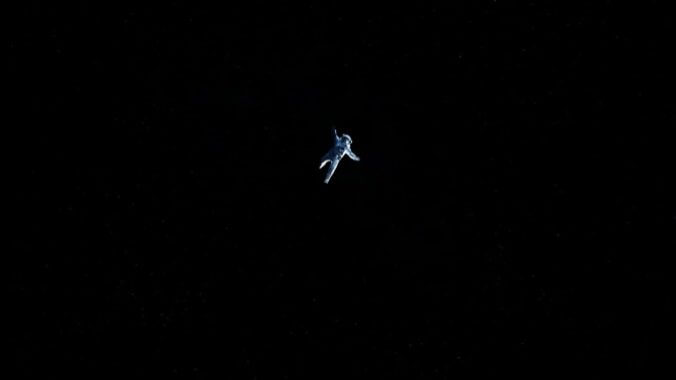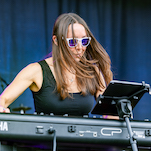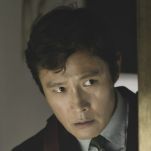One Hell of a Ride: Alfonso Cuarón’s Exploration of Human Fragility in Gravity

There is perhaps no location more terrifying than outer space, that infinite void where infinite multiverses expand in infinite directions at billions of kilometers per second. It’s an airless, pressureless vacuum with no heat except for the hot orbs of plasma we call stars—those gaseous balls of fire blown up and warmed by nuclear fusion. Because this environment cannot sustain human life, because humans fear what we don’t know, and because there’s no way of knowing how much of it we have left to explore, the mere concept of getting stranded in outer space is enough to leave most anyone paralyzed with fear.
Harboring a distinct fascination with the unknown, it makes perfect sense that Alfonso Cuarón would be drawn to outer space. The Mexican director is known for making movies that reckon with the despair that comes with losing control. Children of Men depicted a dystopian vision of the future that was frighteningly uncertain. Sólo con tu pareja and Y tu mamá también dealt with terminal illness and the anguish of knowing one’s life will be cut short, but not knowing when. Harry Potter and the Prisoner of Azkaban explored the occult. Even Roma, his most grounded film, took place during the limbo of a family’s tentative separation amidst a similarly turbulent and unpredictable moment in modern Mexican history. Gravity, celebrating its 10th anniversary, takes this fear of losing control further than any other Cuarón film.
A rare science-fiction thriller that’s packaged tightly at just over 90 minutes, the director’s seventh feature acts as both a tribute to human endurance and a testament to the fragility of life. It’s also a heart-rending tale about mourning that uses the void of outer space as a metaphor for grief, and for conquering that grief. This humanity is something that largely went unacknowledged at the time of the film’s release, when people were mostly concerned with picking apart its scientific inaccuracies—a strange fixation, seeing as Gravity is speculative by design, even if its story takes a more “realistic” approach than your average space thriller. Whatever verisimilitude Gravity has is merely an illusion employed to tap into our fear of the unknown and get us to reckon with it.
Veteran astronaut and mission commander Matt Kowalski (an effortlessly charismatic George Clooney) and his quiet foil, first-time space traveler Dr. Ryan Stone (Sandra Bullock in a career-best performance), are on a mission aboard the Space Shuttle Explorer. It’s in Earth’s orbit to service the Hubble Space Telescope, where Stone is set to perform a series of hardware upgrades. Their mission is upended when their spacecraft is struck by an expanding cloud of space debris, disabling the communication satellites, killing the rest of their crew and leaving Stone and Kowalski tumbling through space.
This arbitrary incident and the breadth of destruction it leaves behind are Gravity’s first illustrations of the fragility that is human life and its susceptibility to the risk of chance. As we learn later on, the life Stone left behind on Earth is its own existential void. A freak accident not unlike the one that left her and Kowalski stranded had snatched her 4-year-old daughter from her some time ago, when the child slipped and hit her head on concrete while playing tag at recess. It’s why, when Kowalski asks her what she likes the most about outer space, she says, “The silence. I could get used to this.” Space is a long way from the problems she’s yet to recuperate from—or so it seems.
Luckily, Kowalski is able to use his propulsion unit to locate Stone. From there, the plan is to use the unit to reach the International Space Station, about 900 miles away. Upon arrival however, they find that the station’s crew has evacuated, leaving behind a spacecraft that cannot take them to Earth because its parachute was already deployed. Low on air and fuel, Kowalski suggests using the vehicle to travel to the nearby Tiangong Space Station, where they could board the Shenzhou spacecraft and return to Earth in one piece. But before they are able to do this, Kowalski triggers his thruster, hurtling them at a high speed.
“Brake! Brake! You have to brake!” Ryan shouts, grabbing hold of the tether.
“I can’t, the can’s empty!” he replies.
As they spin out of control, hitting the spacecraft, their tether tears along one of the station’s solar panels where Stone’s leg gets tangled in the Soyuz’s parachute cords, preventing her from drifting away. It’s here that Cuarón cuts from a medium close-up of Stone frantically clutching onto Kowalski, to the most terrifying long shot in the entire film: Against this black abyss bereft even of stars, their white suits appear as mere specs held loosely at the limb by a couple of sewing threads.
“Hang on, I’m pulling you in!” Stone shouts. Instead, she’s pulled forward by Kowalski’s drift, and her foot slips from the hitch barely holding her in place. It’s clear that the ropes are too loose to stop them both from drifting away. Against her protests, he unlocks the hook connecting their cords.
“You’re gonna make it, Ryan,” he tells Stone before letting go of the tether and drifting off into the darkness, sending her tumbling backwards towards the ISS. Crashing against the spacecraft, she frantically grabs onto a handrail, then makes her way to the airlock.
-

-

-

-

-

-

-

-

-

-

-

-

-

-

-

-

-

-

-

-

-

-

-

-

-

-

-

-

-

-

-

-

-

-

-

-

-

-

-

-








































